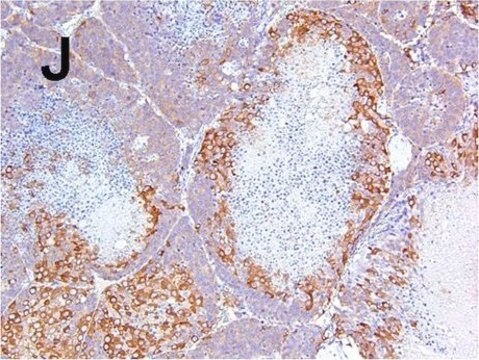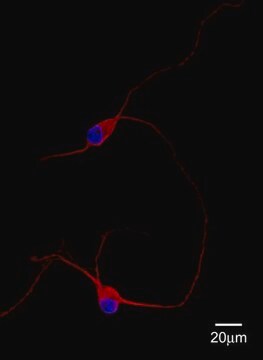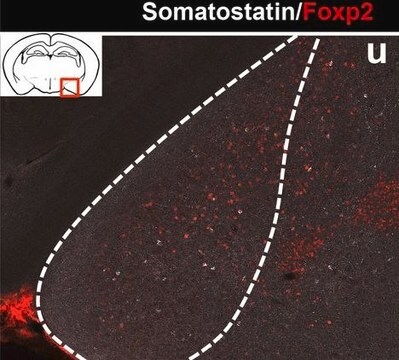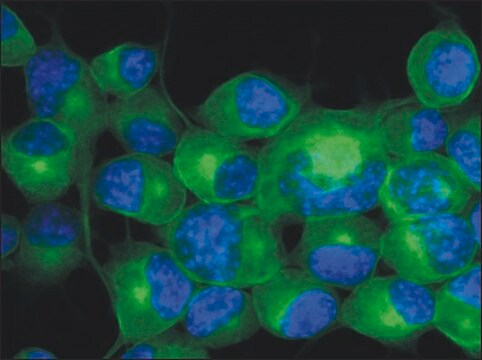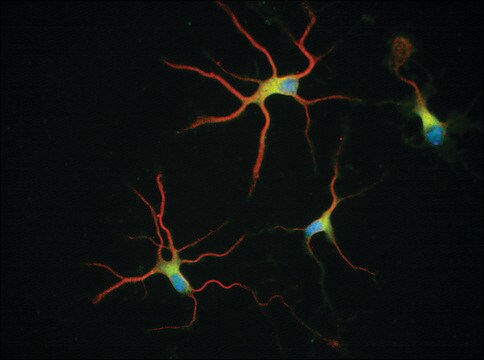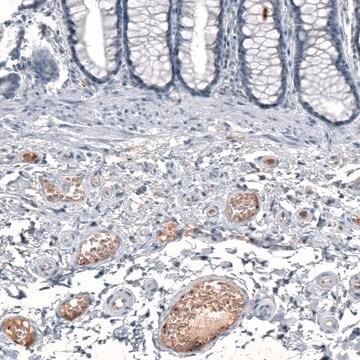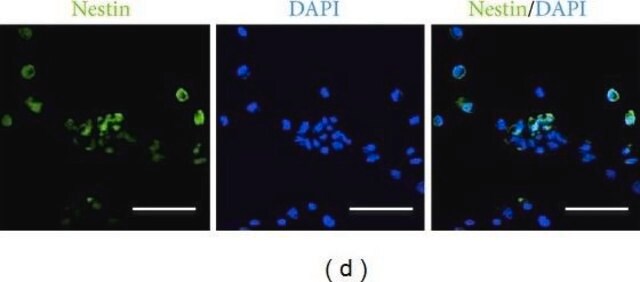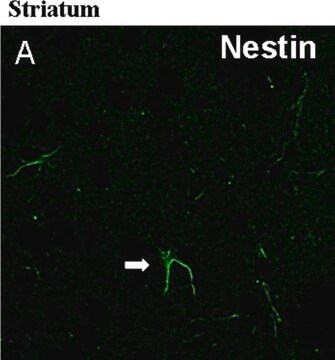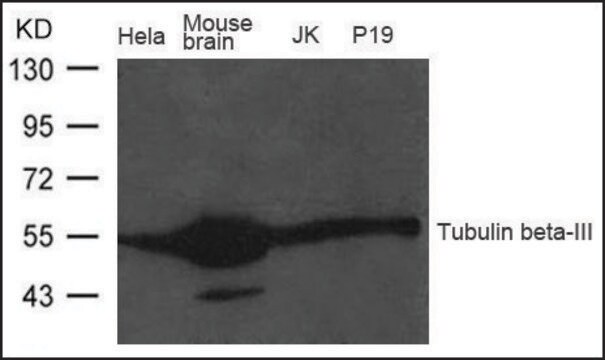MAB1637
Anti-Tubulin Antibody, beta III isoform, CT, clone TU-20 (Similar to TUJ1)
ascites fluid, clone TU-20 (Similar to TUJ1), Chemicon®
Synonim(y):
Tubulin beta-III, tubulin, beta 3, tubulin, beta 4
About This Item
Polecane produkty
pochodzenie biologiczne
mouse
Poziom jakości
forma przeciwciała
ascites fluid
rodzaj przeciwciała
primary antibodies
klon
TU-20 (Similar to TUJ1), monoclonal
reaktywność gatunkowa
rat, mouse, avian, human, bovine, monkey, pig, sheep
producent / nazwa handlowa
Chemicon®
metody
ELISA: suitable
immunocytochemistry: suitable
immunohistochemistry (formalin-fixed, paraffin-embedded sections): suitable
immunoprecipitation (IP): suitable
western blot: suitable
izotyp
IgG1
numer dostępu NCBI
numer dostępu UniProt
Warunki transportu
dry ice
docelowa modyfikacja potranslacyjna
unmodified
informacje o genach
human ... TUBB3(10381)
Opis ogólny
Specyficzność
Immunogen
Zastosowanie
On formalin fixed frozen or paraffin embedded tissue sections: 1:20 to 1:100 dilution from a previous lot. High temperature citrate buffer antigen retrieval is recommended with paraffin embedded tissue sections.
Immunoprecipitation:
A previous lot of this antibody was used on Immunoprecipitation.
Immunocytochemistry:
1:100 to 1:500 dilution from a previous lot was used on fixed cells.
Immunoblotting:
1:1000. Antibody will detect a single band at 50 kDa corresponding to class III beta-tubulin.
ELISA:
A previous lot of this antibody was used on ELISA.
Optimal working dilution must be determined by the end user.
Neuroscience
Neuronal & Glial Markers
Jakość
Western Blot Analysis:
1:1000 dilution of this lot detected tubulin (βIII) on 10 μg of Mouse Brain lysates.
Opis wartości docelowych
Powiązanie
Postać fizyczna
Przechowywanie i stabilność
Handling Recommendations: Upon first thaw, and prior to removing the cap, centrifuge the vial and gently mix the solution. Aliquot into microcentrifuge tubes and store at -20°C. Avoid repeated freeze/thaw cycles, which may damage IgG and affect product performance.
Komentarz do analizy
Positive control: Brain tissue or neurons of any type.
Negative control: Non neural tissue or Astrocytes.
Informacje prawne
Oświadczenie o zrzeczeniu się odpowiedzialności
Nie możesz znaleźć właściwego produktu?
Wypróbuj nasz Narzędzie selektora produktów.
polecane
Kod klasy składowania
12 - Non Combustible Liquids
Klasa zagrożenia wodnego (WGK)
WGK 2
Temperatura zapłonu (°F)
Not applicable
Temperatura zapłonu (°C)
Not applicable
Certyfikaty analizy (CoA)
Poszukaj Certyfikaty analizy (CoA), wpisując numer partii/serii produktów. Numery serii i partii można znaleźć na etykiecie produktu po słowach „seria” lub „partia”.
Masz już ten produkt?
Dokumenty związane z niedawno zakupionymi produktami zostały zamieszczone w Bibliotece dokumentów.
Klienci oglądali również te produkty
Produkty
ReNcell neural progenitors are immortalized human neural stem cell lines that can differentiate into neurons, astrocytes sand oligodendrocytes.
Derivation and characterization of functional human neural stem cell derived oligodendrocyte progenitor cells (OPCs) that efficiently myelinate primary neurons in culture.
Uzyskanie i scharakteryzowanie funkcjonalnych komórek progenitorowych oligodendrocytów (OPC) pochodzących z ludzkich neuronalnych komórek macierzystych, które skutecznie mielinizują pierwotne neurony w hodowli.
Protokoły
Step-by-step culture protocols for neural stem cell culture including NSC isolation, expansion, differentiation and characterization.
Nasz zespół naukowców ma doświadczenie we wszystkich obszarach badań, w tym w naukach przyrodniczych, materiałoznawstwie, syntezie chemicznej, chromatografii, analityce i wielu innych dziedzinach.
Skontaktuj się z zespołem ds. pomocy technicznej